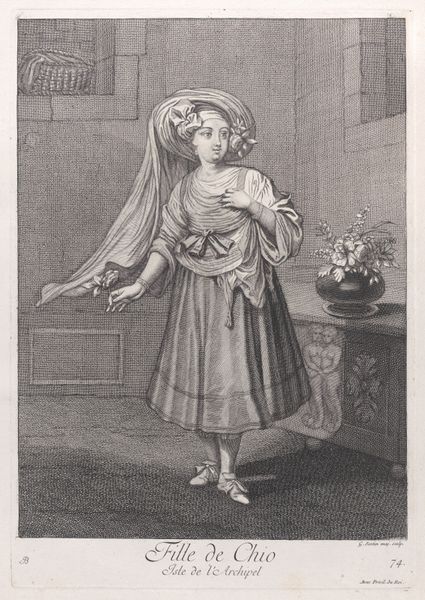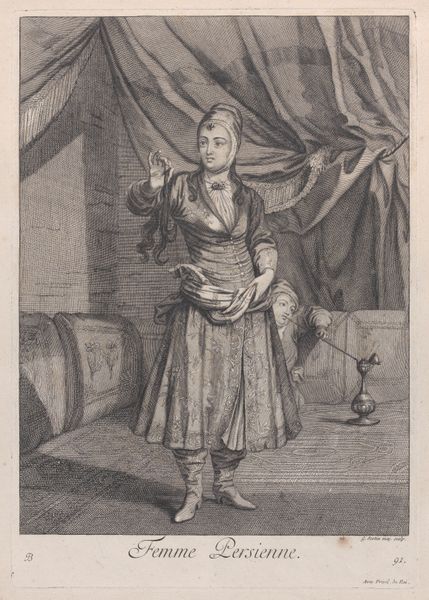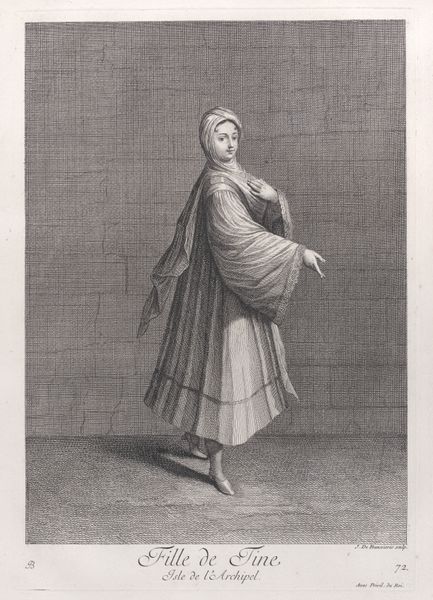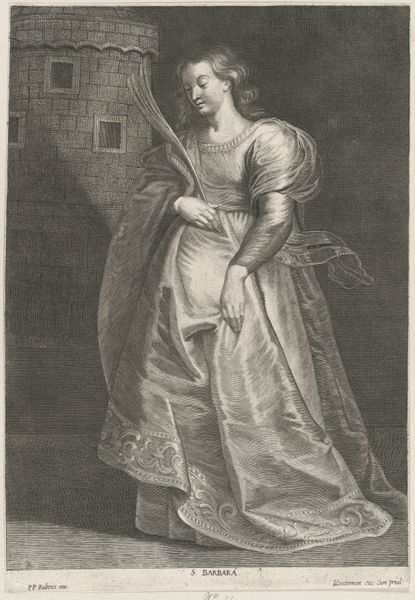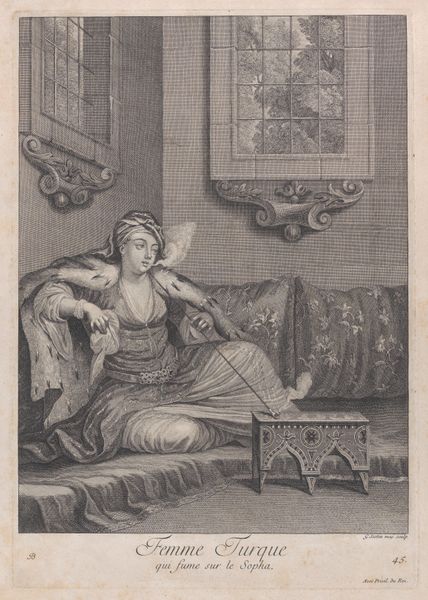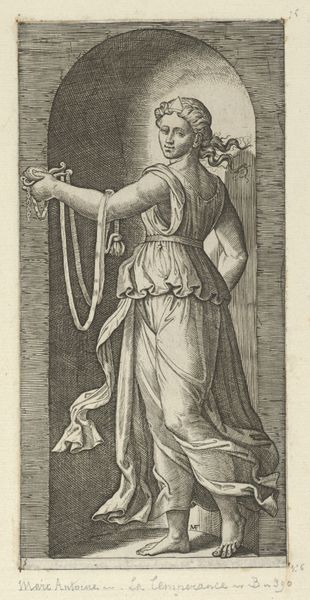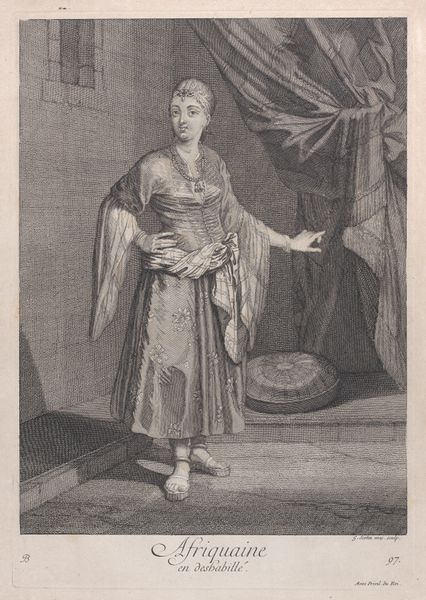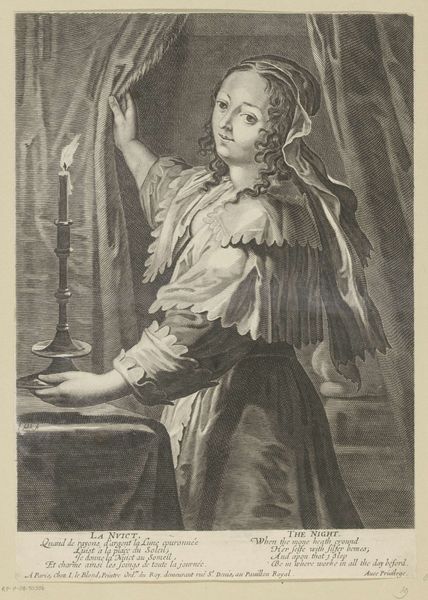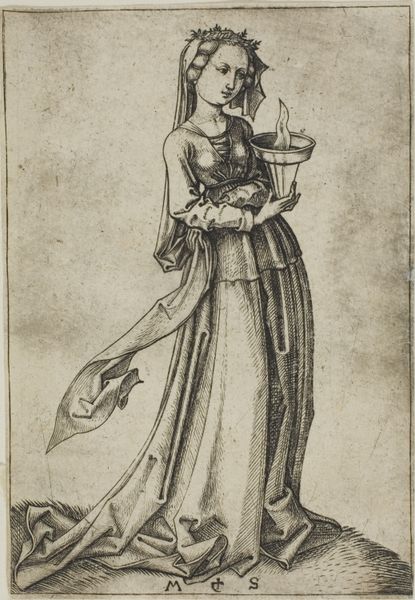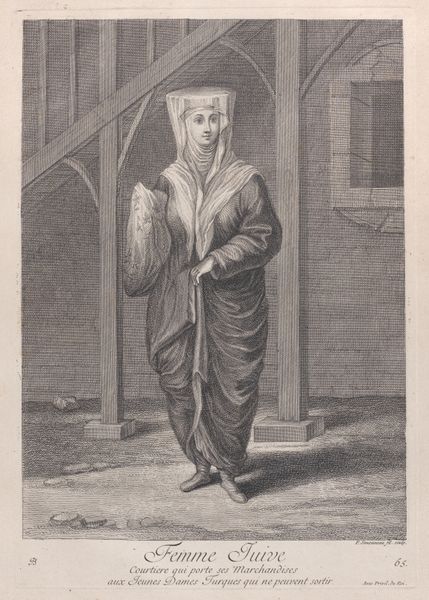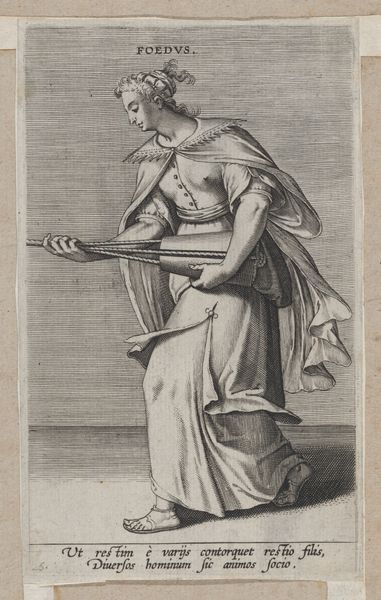
Tchinguis, ou Danseuse Turque, plate 54 from "Recueil de cent estampes représentent differentes nations du Levant" 1714 - 1715
0:00
0:00
drawing, print, engraving
#
portrait
#
drawing
#
baroque
# print
#
islamic-art
#
genre-painting
#
engraving
Dimensions: Sheet: 16 7/8 × 12 1/4 in. (42.8 × 31.1 cm) Plate: 14 1/8 × 9 3/4 in. (35.8 × 24.7 cm)
Copyright: Public Domain
Editor: This print, "Tchinguis, ou Danseuse Turque," by Jean Baptiste Vanmour, created around 1714, presents a dancer in what I assume is a Turkish setting. I’m struck by the details rendered through the engraving, especially in the dancer's costume. What can you tell me about how the materials and the act of production might inform our understanding? Curator: Notice how the very act of creating multiple prints allows for wider dissemination of this image. What was the market for these prints? Were they intended for a specific audience interested in the exotic “other”? Consider the engraver’s labor, transforming Vanmour’s vision. It invites us to think about artistic exchange between cultures. Editor: So, the means of production becomes part of the message, not just the image itself? I see it. Who would have consumed prints like these? Curator: Possibly wealthy Europeans interested in Orientalism, maybe even artisans seeking visual references. It satisfied a particular taste. The print itself becomes a commodity. Notice the precision of the engraving— it mimics textures of fabric, yet it’s all ink on paper. Is it "high art" or is it part of the decorative culture? This raises questions about value. Editor: I guess I hadn’t thought about the actual process as being as important. Thinking about how the artist's work, the printer’s work, and the audience’s desires all contribute. Curator: Precisely! The print's material existence tells a rich story about early 18th-century trade, artistic production, and the consumption of cultural representations. Editor: Right. Looking at the work as an object made through specific choices with real-world consequences adds a completely different dimension than purely judging it for, say, aesthetics. Thank you!
Comments
No comments
Be the first to comment and join the conversation on the ultimate creative platform.
